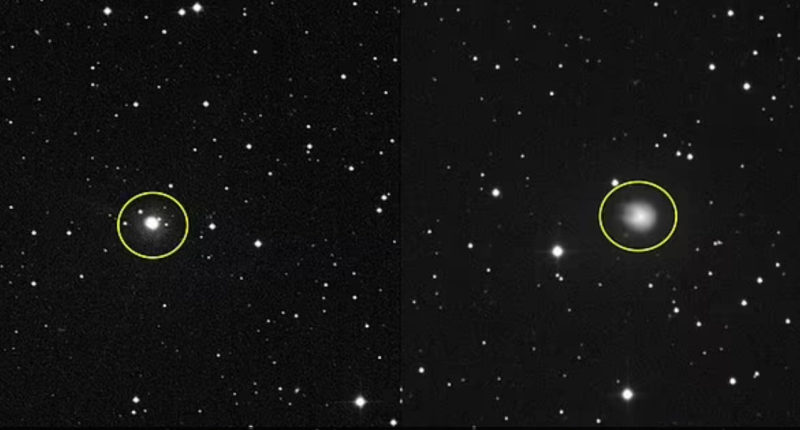A CITY-SIZED comet with horns and freezing cryovolcanoes is heading towards Earth, according to astronomers.
Fortunately, it won’t hit us, but it you may be able to spot it in the sky when it reaches its closest point to Earth next year.
The giant space rock, dubbed 12P/Pons-Brooks, is about three times the size of Mount Everest.
It is what’s known as a cryovolcanic comet, which is essentially a cold volcano, so it constantly spits out icy debris across our solar system.
It was last seen by humans in 1954, due to its 71-year orbit of the sun.
Pons-Brooks exploded sometime between October 5 and October 7, leaving astronomers with new imagery revealing two horns coming out of the comet.
READ MORE ON SPACE
The comet lies in the Hercules constellation, and can be spotted in the East-Northeast direction about 36 degrees above the horizon.
When can I see it?
The comet will be making its closest pass of Earth on April 21, 2024.
But it is predicted to reach a magnitude of +4, which is what astronomers use to gauge the brightness of celestial objects.
The smaller the number, the brighter the object.
Most read in Tech
To put the figure into context, the North Star reaches a magnitude of +2.
This means the comet may also be visible to the naked eye in May and June 2024.
Astronomers expect it to be brightest in the sky on June 2, 2024 – so, mark your calendars.
Once Pons-Brooks makes its pass of Earth, between April and June of next year, the cosmic rock won’t be seen by humans again until 2095.
Best Phone and Gadget tips and hacks

Looking for tips and hacks for your phone? Want to find those secret features within social media apps? We have you covered…











